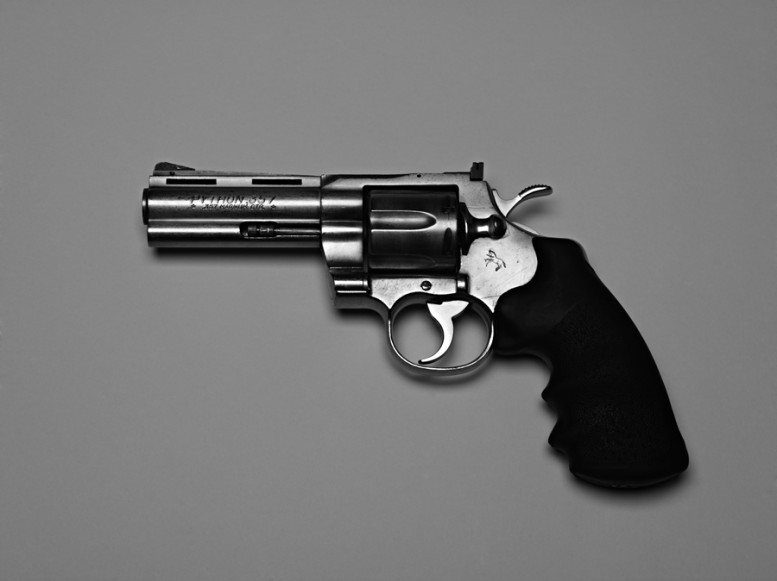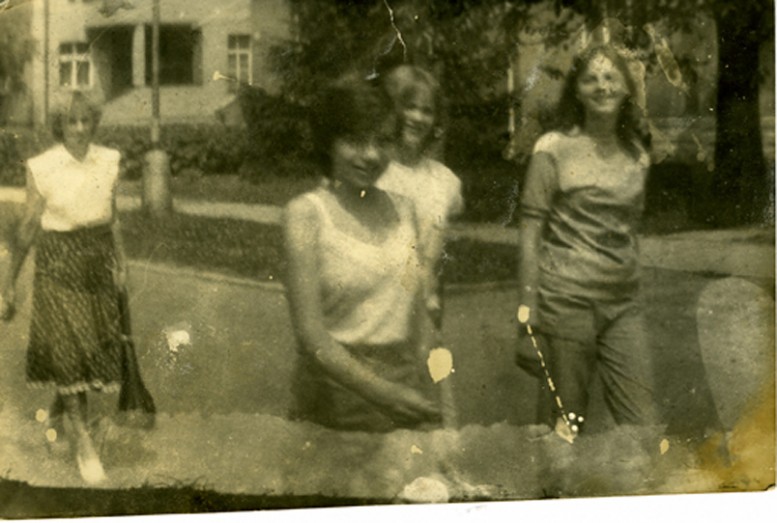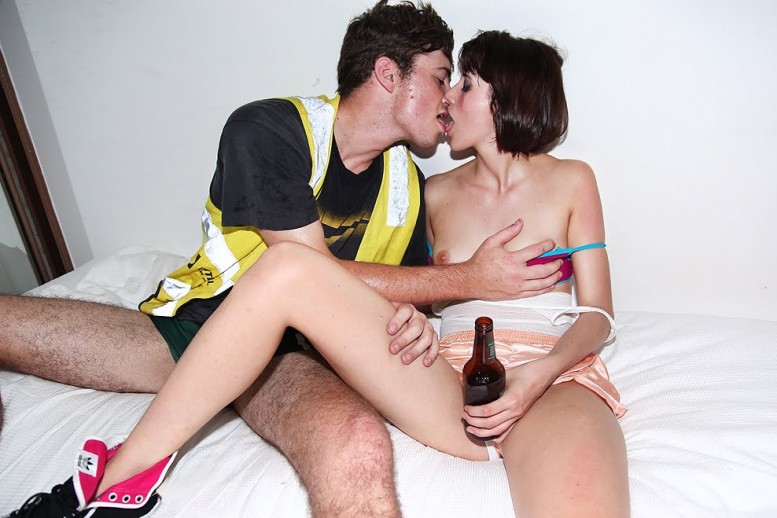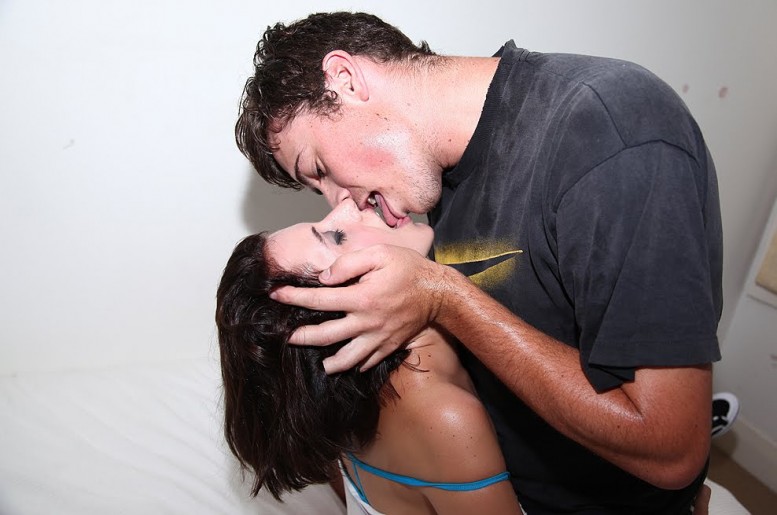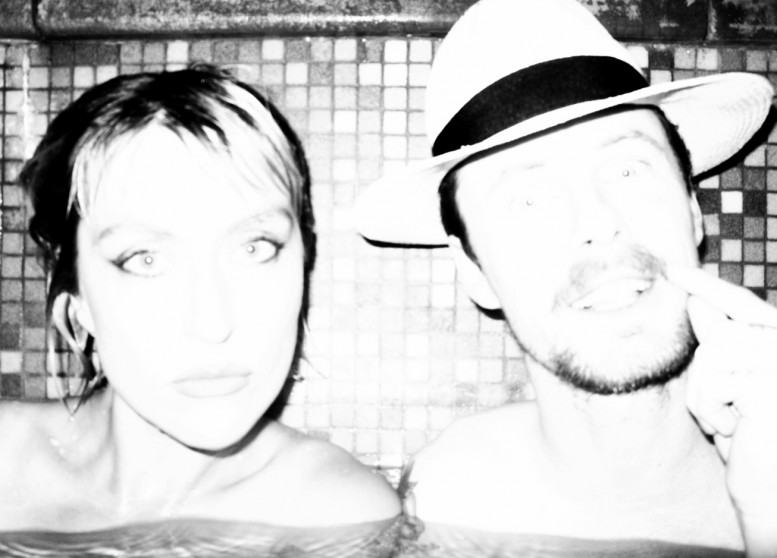 Adarsha Benjamin and Oliver Maxwell Kupper in the pool, Los Angeles, California - year of our lord two thousand and eleven. Photography by Bethany McCarty.
Adarsha Benjamin and Oliver Maxwell Kupper in the pool, Los Angeles, California - year of our lord two thousand and eleven. Photography by Bethany McCarty.
New Photographs by Hedi Slimane
(Un) dressed: An Evolution of the Nude
right: Philippe Halsman, Story for life + lover, 1949 left: Bert Stern, Fashion for Prenton Vogue, 1970
Aristocratic, the online gallery of limited edition art photography, presents an exhibition entitled (Un) dressed - an exploration of the nude in photography from 900 until today. The exhibit is an exploration, not so much of the nude itself, but of the evolution of the nude - "women in their complexity" seen through the eyes of major Italian and international photographers in the last century such as Edward Weston, Helmut Newton, Karl Lagerfeld, Hideki Fujii, Nan Goldin, Araki and Maurizio Galimberti. The 25 works on display offer a fascinating journey through space and time to grasp how the image of the women have changed. The exhibition can be seen from May 5 to 18 at the Hettabretz, Palazzo Borromeo in Milan or online. www.aristocratic.com
Adarsha Shoots Voxhaul Broadcast
Behind the scenes. Adarsha Benjamin Shoots Voxhaul Broadcast in Venice, California. Footage by Oliver Maxwell Kupper for Pas Un Autre. Music by Voxhaul Broadcast
[OUTSIDERS] MIROSLAV TICHÝ
Miroslav Tichý, who died only a few weeks ago, began taking photographs in the 1960s, continuing until the late 1980s, accumulating an expansive archive of images. Tichý originally studied painting at the Academy of Fine Arts in Prague, where he was an esteemed painter and draughtsman, taking a lively modernist approach to his artwork. In 1948, with the adoption of communism in Czechoslovakia, artists were enforced to produce work in the socialist realism manner, which Tichý determinedly rejected. In opposition, he and like-minded alumni formed an artist collective, the Brněnská Pětka (Brno Five), staging subversive exhibitions, which attracted continuous state surveillance. In 1957, the artist suffered a mental collapse - he was prone to psychological breakdowns from a young age - and this led to his removal from mainstream society, moving back to his small hometown, Kyjov. He became a non-conformist, eccentric character, half-conscious, half-delusional to his subversive outsider situation. A new exhibition on view at the Wilkinson Gallery in London until June 11 explores the works of Miroslav Tichý. www.wilkinsongallery.com
[MOSCOW] Sex:Female
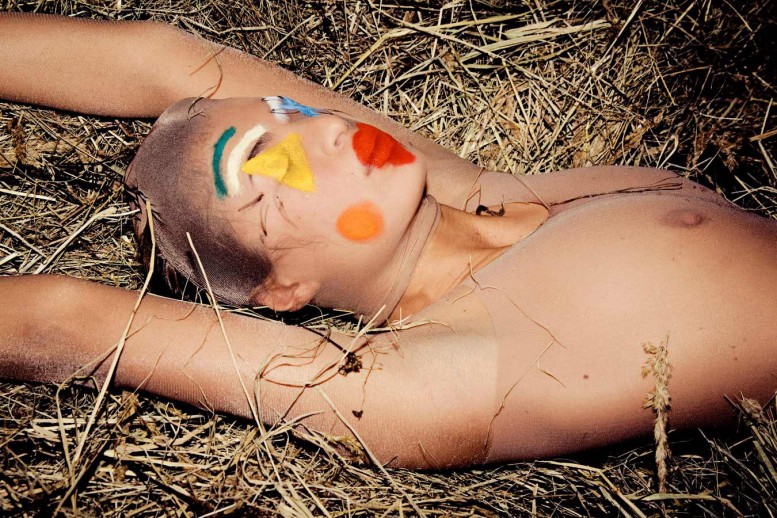
In a buy me, sell me, fuck me world Lena Vazhenina's photography is an atonement for all our collective mediocrity. Vazhenina thinks sex is cool, but don't be fooled - her photo project is named Sex:female just to grab your attention. With its weirdly placed colon and poor English, the title is also confusing. However, Lena Vazhenina just might be on to something, because this Moscow based photographer is on the rise. Vazhenina's intriguing images look like whimsical gender bending rape scenarios crossed with what the world would look like if you had a magic pair of glasses that made everything look like an MDMA trip.
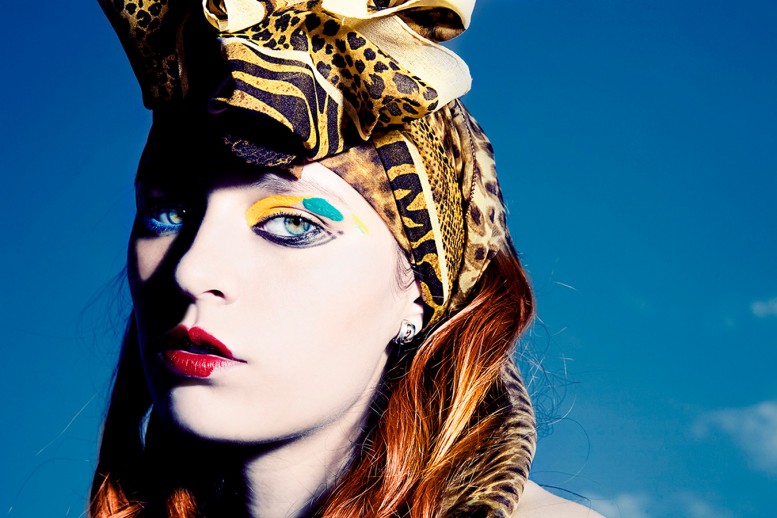
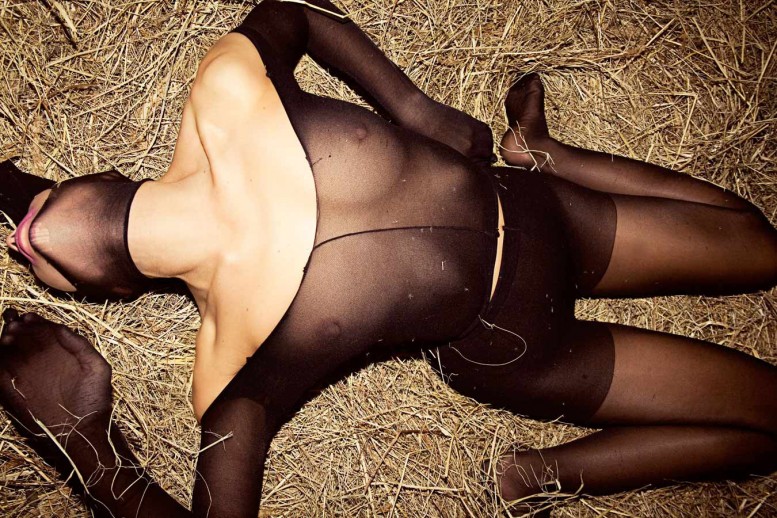
Richard Avedon: Photographer of Influence
 Black and white photographs by Richard Avedon will be on display starting May 21 at te Nassau County Museum of Art. Richard Avedon: Photographer of Influence will be on view May 21 to September 4. www.nassaumuseum.org
Black and white photographs by Richard Avedon will be on display starting May 21 at te Nassau County Museum of Art. Richard Avedon: Photographer of Influence will be on view May 21 to September 4. www.nassaumuseum.org
Adarsha and Bethany in the Pool, Los Angeles
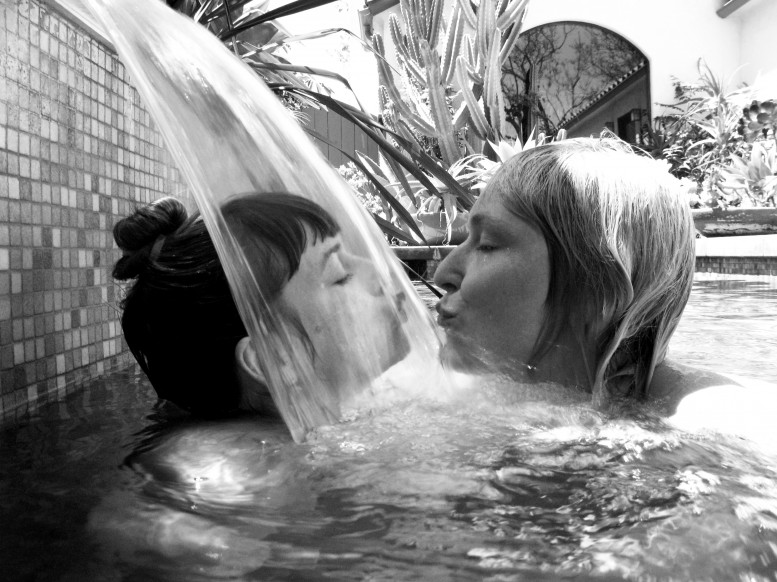 photography by Oliver Maxwell Kupper
photography by Oliver Maxwell Kupper
Anton Corbijn - Inwards & Onwards
Anthony Kiedis, West Palm Beach, 2003
Dutch photographer Anton Corbijn has been a pivotal force in the visual landscape of music for the last three decades. Corbijn is the creative director for Depeche Mode, has taken some of the earliest photographs of the band Joy Division, as well as directed numerous music videos, including one for Nirvana's Heart Shaped Box. Foam, Amsterdam, presents Anton Corbijn's most recent photographic project, in which he photographs of a few of his favourite artists, including Gerhard Richter, Alexander McQueen, Richard Prince, Iggy Pop, Anselm Kiefer, Damien Hirst, Tom Waits, Peter Doig, Bruce Springsteen, Lucian Freud and Karel Appel.
Alexander McQueen, London, 2007
"Anton Corbijn is interested in how artists struggle with the creative process: the pain and the drama of the act of creation. His monumental black-and-white portraits blend austerity and aesthetics and attract attention because of the deliberate and exacting way they capture the character of the person being portrayed. The work shows Corbijn's concentrated gaze, his feeling for wonder and his ability to empathise with another. "
On view from June 23 to September 1 - www.foam.org
Mick Jagger: Young in the 60s
 Mick Jagger, 1966. Photograph by Gered Mankowitz
Mick Jagger, 1966. Photograph by Gered MankowitzPortraits of Mick Jagger taken in the 1960s will be on display at the National Portrait Gallery in London from 3 May until 27 November 2011. Documenting the singer’s early rise to become one of the most influential singer-songwriters of the era, the display will coincide with the publication of Mick Jagger: The Photobook by Thames & Hudson. www.mickjagger.com
I Love You When You Smile
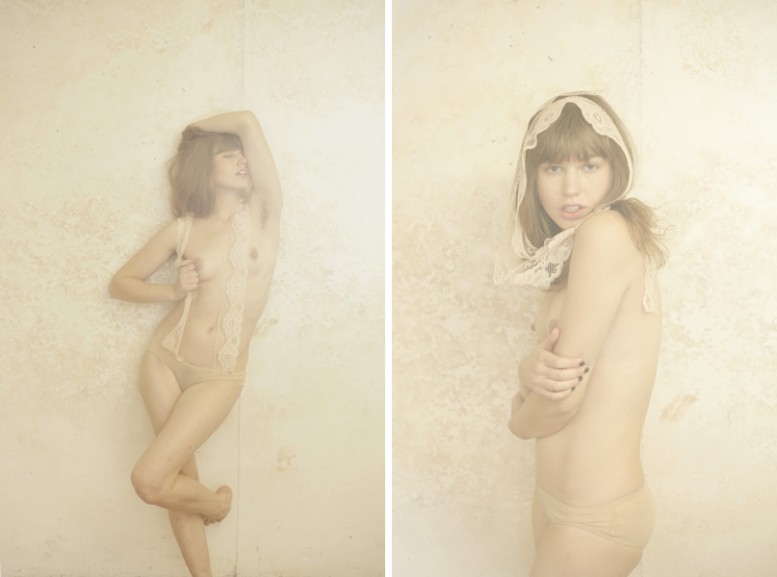
Continuing with the great tradition of photographer duos, Rita Sousa and Ivano Salonia, who are "partners both in [their] professional and private life," started a website called I Love You When You Smile, a collection of their work created together. The images they capture are real and honest, almost like a lifestyle diary, mixing both fashion editorial and portraiture. I Love You When You Smile is based in Amsterdam. www.iloveyouwhenyousmile.com
[IMAGES] Deep Sea Diving
 Photography by Rory DCS www.rorydcs.com
Photography by Rory DCS www.rorydcs.com
The Opening Spread, by Elvis Di Fazio
Jacques Henri Lartigue's Floating World
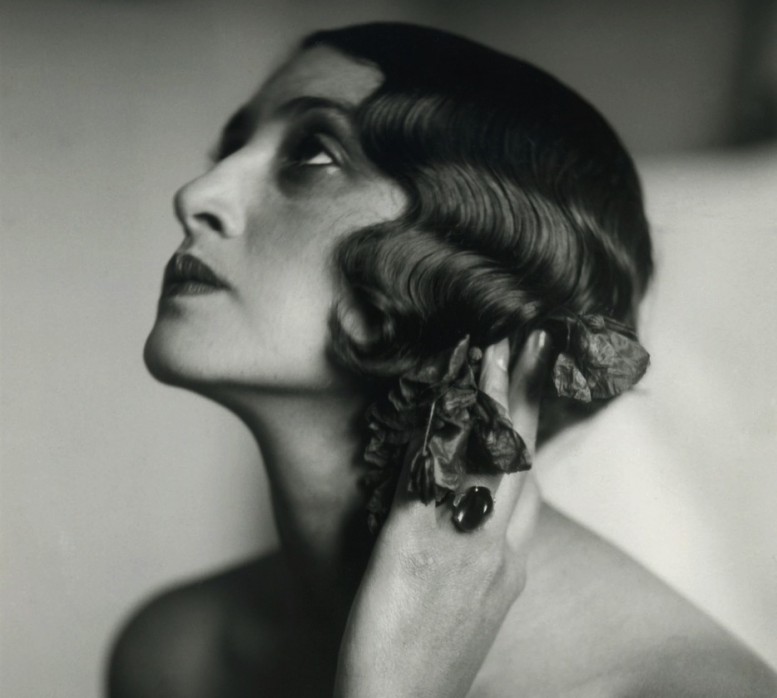
If it wasn't for a friend with connections and the assassination of John F. Kennedy it is quite possible that we may have never known of a photographer named Jacques Henri Lartigue. Lartigue, born in 1894 to an illustrious French family, started taking photographs when he was only 6 years old. A hilarious photograph of a young Lartigue at 11 years old is a self portrait...in the bath....with a toy airplane. Being well off afforded Lartigue camera equipment and time to explore his photographic interests - which for most of his life was mainly a hobby. Lartigue's happy go lucky images of a divined, French upperclass, attending automobile races, prancing on the beach, and laying about were all common divertissements of this bon vivant photographer during a burgeoning 20th century. He also photographed his lover and muse, the romanian model Renee Perle, a strikingly beautiful apparition that appeared in many of his photographs through out his oeuvra.

As Lartigue got older he mainly quit taking photographs - maybe he lost interest, maybe the world wasn't as happy go lucky after two wars, or, depressingly, maybe his innocence was gone. Only when he was 69 years old were his boyhood photographs serendipitously discovered by Charles Rado of the famous Rapho agency, who represented such notable photographers as Brassaï and Nora Dumas. Charles Rado in turn introduced Lartigue to John Szarkowski, then curator of the Museum of Modern Art in New York, who arranged an exhibition of his work at the museum and photo spread in Life magazine in 1963, which coincidentally landed in the commemoration issue of the death of president John F. Kennedy, allowing for a lot of exposure. The rest was history - before Lartigue died at 92 in 1986, the offers to shoot for magazine came flooding in, and Lartigue was entered into the pantheon of some of the greatest artists of the 20th century. Adding to the legacy of eccentricities, his son, Dany Lartigue, as well as being a painter, is a noted entomologist specialising in butterflies, and is patron of a museum in St. Tropez which, alongside paintings and souvenirs of his father, contains an example of every French diurnal butterfly discovered.
A Floating World: Photographs by Jaques Henri Lartigue (1894-1986), which is on view now at the CaixaForum Madrid, collects over 200 pieces that include modern reprints, original snapshots, cameras, notebooks, planners, and the diaries of one of the most formidable names in twentieth century photography. The exhibit will join the 2011 PhotoEspana festival in Madrid - a massive annual photographic expo - starting June 1 and running till July 24.
Text by Oliver Maxwell Kupper for Pas Un Autre
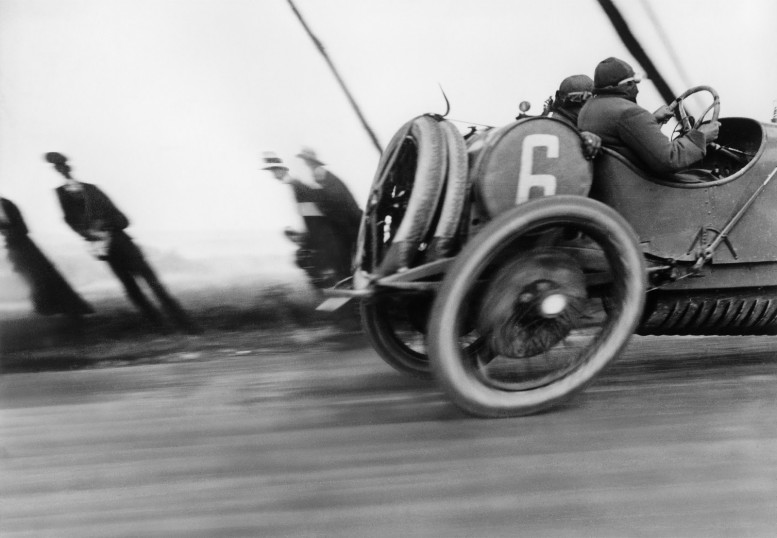
Charles Brittin's Freckled Shangri-La
 Beverly Walsh, 1958
Beverly Walsh, 1958
Charles Brittin, who died in January of this year at 82 years old, stole the ethos and the zeitgeist of the 1960s West coast in all its subtle wind-blown, freckled, ocean spray glamour - as well as the political angst of youth on the verge of revolt in honor of their young ideals. Charles Brittin: West & South, a retrospective exhibition of work by Los Angeles photographer Charles Brittin, featuring more than 100 photographs, many of them previously unexhibited is on view starting tomorrow at the Michael Kohn Gallery in Los Angeles.
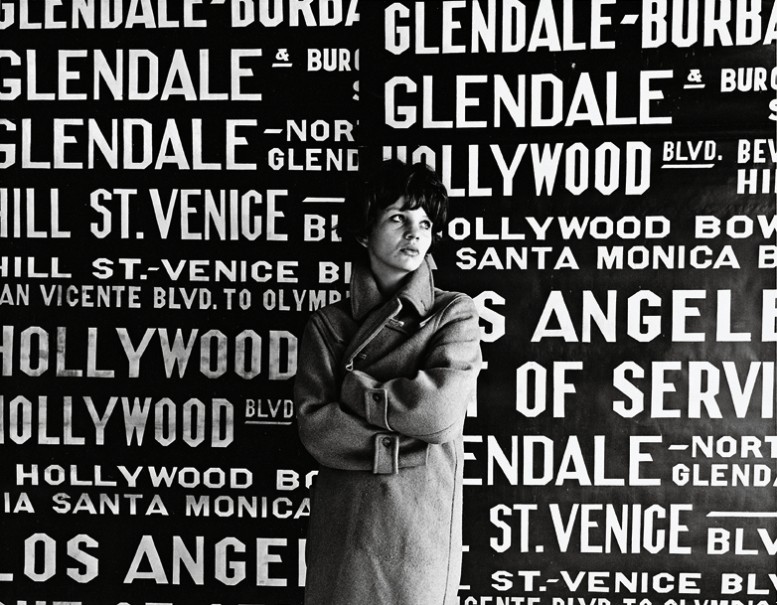 Suzi Hicks, with signage from L.A.’s electric transit system, c.1956
Suzi Hicks, with signage from L.A.’s electric transit system, c.1956
Born in Cedar Rapids, Iowa, in 1928, Brittin briefly attended UCLA, then dropped out of school and taught himself how to take photographs. During the 1950s, Brittin became the unofficial house photographer for the Beat community that coalesced around the artist Wallace Berman, and contributed several photographs to Berman’s ground-breaking artist's magazine, Semina. Brittin settled in Venice Beach, California, in 1951, and his beach shack became a hangout for the Berman circle, which included actors Dean Stockwell and Dennis Hopper, artist John Altoon, curator Walter Hopps and poet Brittin was working as a mailman at the time, and spent much of his free time wandering the streets with a camera; he came to know Venice intimately, and his pictures of the sleepy beach town are freighted with a hushed beauty and forlorn sweetness.
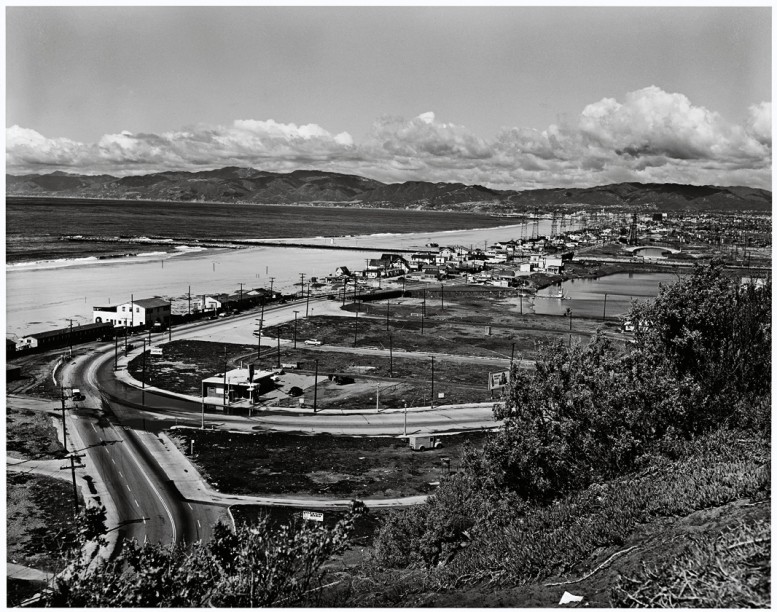 Santa Monica Bay, 1950
Santa Monica Bay, 1950
Paris at Night: Brassai, Ilse Bing, Doisneau & Kertesz
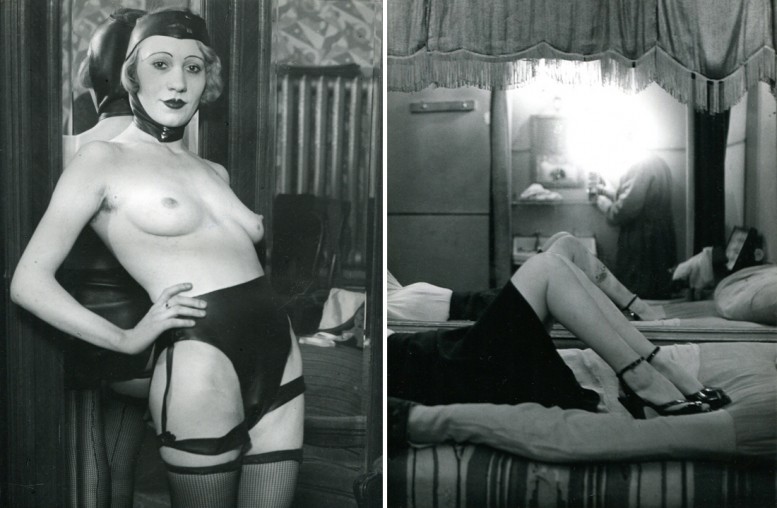 Left: Brassai, La Casque de Cuir, 1932 Right: Robert Doisneau, Untitled, 1952
Left: Brassai, La Casque de Cuir, 1932 Right: Robert Doisneau, Untitled, 1952
"Night only suggests things, it doesn't fully reveal them. Night unnerves us and surprises us with its strangeness; it frees powers within us which were controlled by reason during the day..." -Brassai
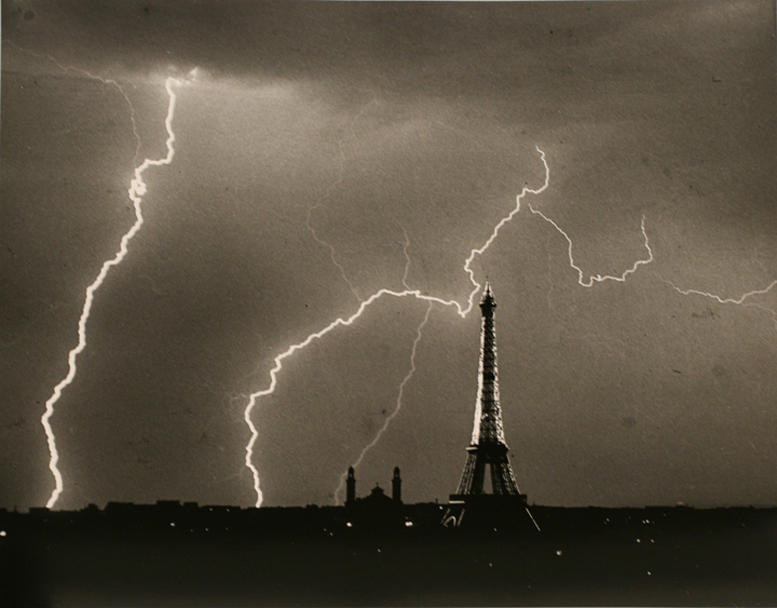 Andre Kertesz, Eiffel Tower (Summer Storm), 1927
Andre Kertesz, Eiffel Tower (Summer Storm), 1927
Bruce Silverstein Gallery, in New York, presents: Night, an exhibition of the work of Brassai, Ilse Bing, Robert Doisneau and Andre Kertesz. The leading artists working with photography in Europe during the 1920s and 30s found the night to be an inspiring subject that became a leitmotif in their work, a revelatory expression of the burgeoning modernist approach to art making that reflects the shifting social and artistic conventions during this period. Photographic images made at night were new, bold, mysterious and brave, the ability to photograph at night being a recent technical capability that had yet to be mastered or even considered by the majority of photographers working in the 20s and 30s. Night was an artistic frontier and the making of images at night implied a certain creative seriousness that helped bring photographers into dialogue with the larger art world during these decades. At this moment in art and in photography in particular, night and all its connotations provided the perfect backdrop for realizing the artist’s creative intent.
The four artists selected for this exhibition had an affinity for working at night and the images on view extend the first half of the 20th century. The works featured include Brassai’s well-known Paris de Nuit images, Ilse Bing’s early formalist compositions, Doisneau’s free-spirited and engaging photographs of Parisian nightlife, and Andre Kertesz’s early night photographs from Hungary—the purported inspiration for Brassai’s Paris series—as well as remarkable New York images that reveal the artist’s consistently innovative vision further inspired by the night.
On view until June 04, 2011www.brucesilverstein.com
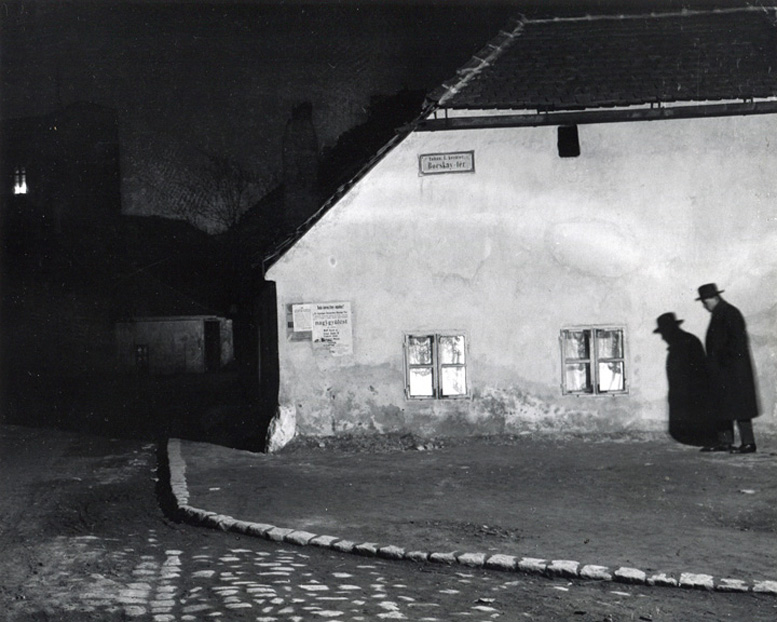 Andre Kertesz, Untitled (Budapest), 1914
Andre Kertesz, Untitled (Budapest), 1914
Juergen Teller "Man With Banana"
 Vivienne Westwood
Vivienne WestwoodIt could be noted that the true face of Marc Jacobs is Juergen Teller. The german fashion photographer's images are so recognizable that the images in and of themselves are a personification of Teller himself. Teller, who was born in Germany in 1964, invented his own brand of 'snapshot' photography that has been imitated into oblivion.
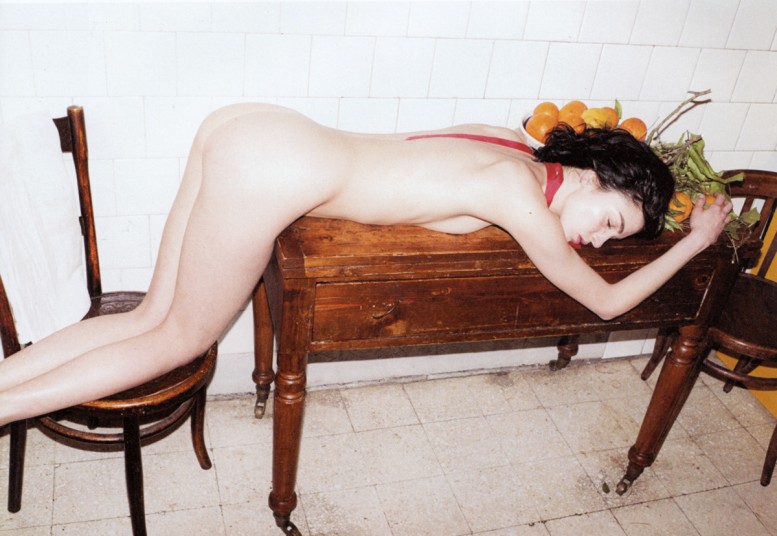
Teller started his career in 1986 photographing celebrities for magazines. For Nirvana's album Smells Like Teen , Kurt Cobain called Teller and asked him to shoot the photos for the liner notes. What is so striking about Teller as a fashion photographer is that he has never once conceded by comprising his aesthetic to that of the fashion industry's. And his refusal to separate his personal work from his commercial work has made Teller's photography shockingly raw and painfully honest.
Last Friday saw the opening of a solo-exhibition at the Dallas Contemporary in Texas. Teller will present a selection of photographs specifically created for the exhibition. Juergen Teller: Man with Banana runs until August 2011. www.dallascontemporary.org
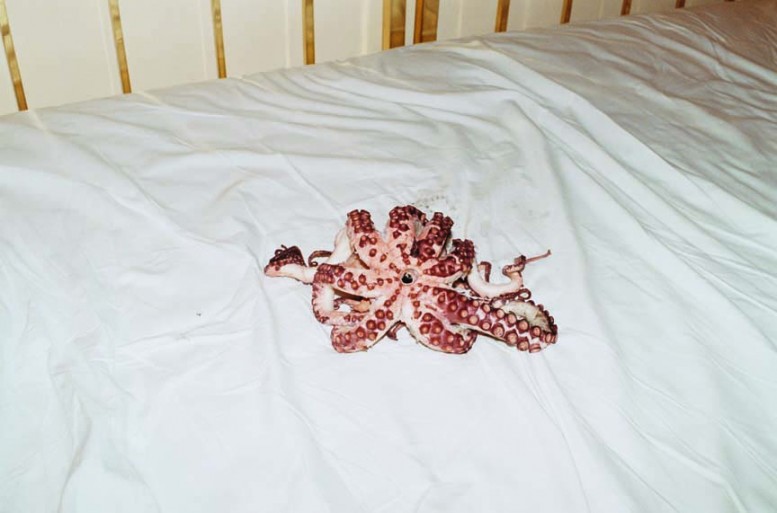
First Look: 'Rebel' by James Franco & Harmony Korine
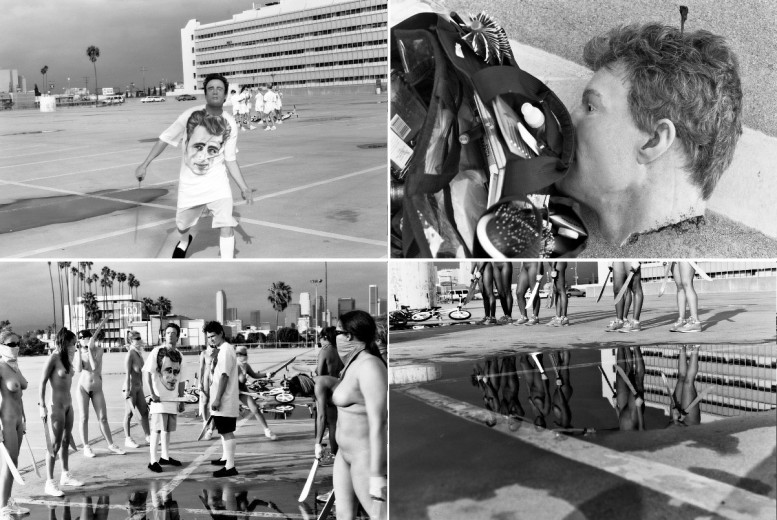 Behind the scenes photos by Adarsha Benjamin of 'Rebel' - a film by James Franco and Harmony Korine to be premiered at the Venice Biennale this June.
Behind the scenes photos by Adarsha Benjamin of 'Rebel' - a film by James Franco and Harmony Korine to be premiered at the Venice Biennale this June.
The Renaissance of Photojournalism: Antiphotojournalism

Photojournalism is in the midst of a remarkable, and singularly unexpected, renaissance. New practices, strategies, viewpoints, techniques, and agents have radically transformed the institutions and the fundamental concepts of the field. Whilst it has become fashionable to lament the death of photojournalism, actual events suggest that something quite different is taking place. The group exhibition Antiphotojournalism charts these new developments in exciting ways. Antiphotojournalism is on view until June 8 at Foam, Amsterdam. www.foam.org
Exhibitions: Deep Water
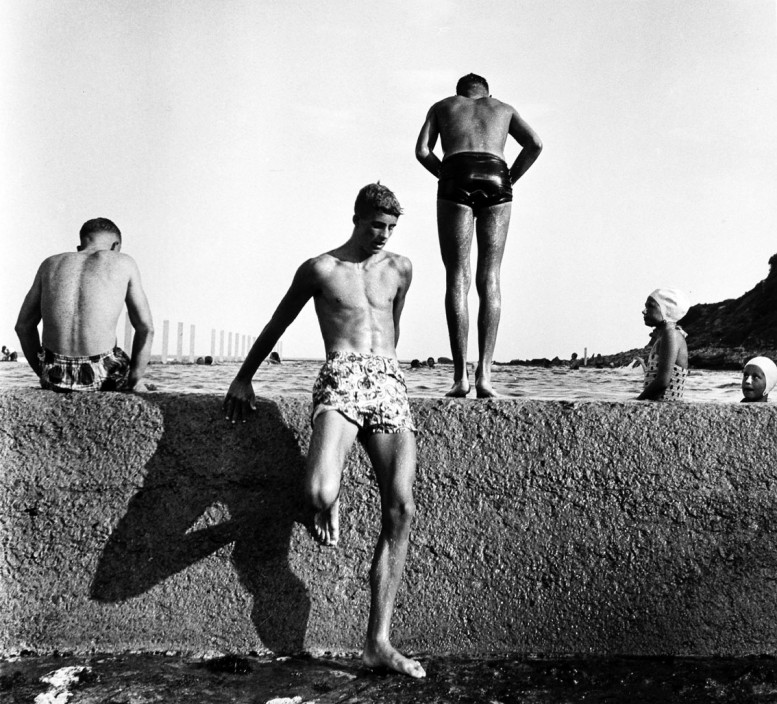 Max Dupain 'at Newport' 1952, Sydney
Max Dupain 'at Newport' 1952, Sydney
Deep Water, a new exhibition which just opened at the National Gallery of Victoria in Australia, explores photography in its relationship with water. is a ubiquitous. "Water is a ubiquitous and mutable substance. It is the fundamental element that enables and sustains all life on earth, but possess a deadly and destructive power. Since the nineteenth century, water and its environs have presented an endlessly fascinating subject for photographers." Drawn from the collection of the National Gallery of Victoria, the exhibition is split in two sections: freshwater and saltwater - it includes photographs of Antarctica, seascapes and coastal scenes, inland water ways and rivers, and images of swimming and bathing. www.ngv.vic.gov.au

